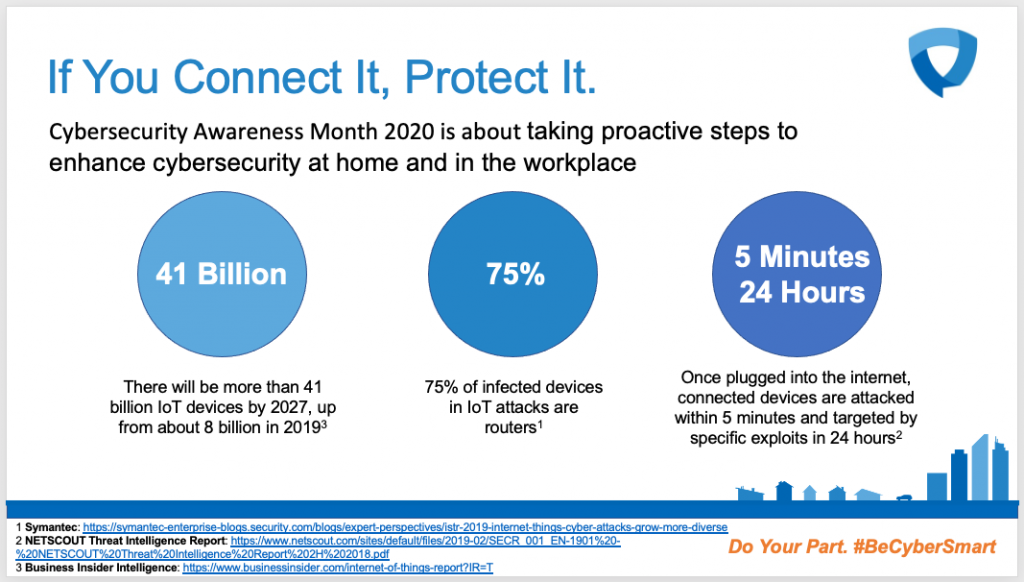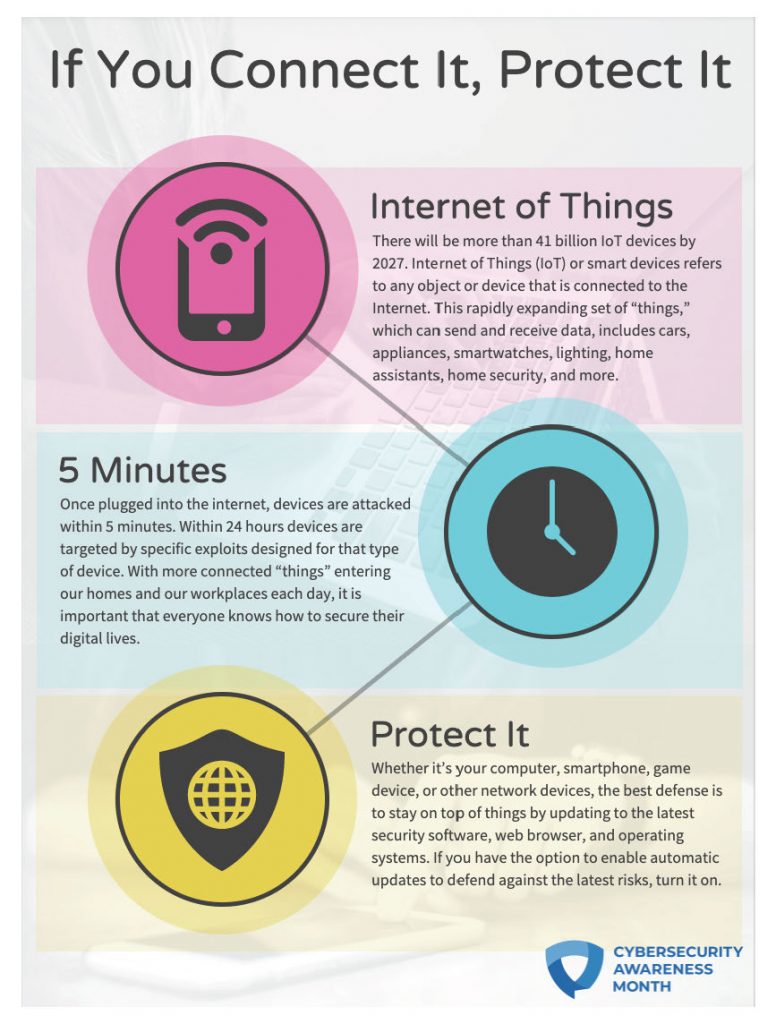INTERNET OF THINGS
Internet of Things (IoT) or smart devices refers to any object or device that is connected to the Internet. This rapidly expanding set of “things,” which can send and receive data, includes cars, appliances, smartwatches, lighting, home assistants, home security, and more. #BeCyberSmart to connect with confidence and protect your interconnected world.

WHY SHOULD I CARE?
- Cars, appliances, wearables, lighting, healthcare, and home security all contain sensing devices that can talk to another machine and trigger other actions. Examples include devices that direct your car to an open spot in a parking lot; mechanisms that control energy use in your home; and tools that track eating, sleeping, and exercise habits.
- New Internet-connected devices provide a level of convenience in our lives, but they require that we share more information than ever. The security of this information, and the security of these devices, is not always guaranteed. Once your device connects to the Internet, you and your device could potentially be vulnerable to all sorts of risks.
- With more connected “things” entering our homes and our workplaces each day, it is important that everyone knows how to secure their digital lives.

SIMPLE TIPS TO PROTECT IT
- Lock Down Your Login. Make a long, unique passphrase for each password you use. Change your device’s factory security settings from the default password. This is one of the most important steps to take in the protection of IoT devices. According to NIST guidance, you should consider using the longest password or passphrase permissible. Get creative and create a unique password for your IoT devices. Read the Password Safety Awareness article for more information.
- Keep A Clean Machine. Keep all software on internet-connected devices – including personal computers, smartphones, and tablets – current to reduce the risk of infection from ransomware and malware. Configure your devices to automatically update or to notify you when an update is available.
- Own Your Online Presence. Every time you sign up for a new account, download a new app or get a new device, immediately configure the privacy and security settings to your comfort level for information sharing. Your mobile device could be filled with apps running in the background or using default permissions you never realized you approved—gathering your personal information without your knowledge while also putting your identity and privacy at risk. Check your app permissions and learn to just say “no” to privilege requests that don’t make sense. Regularly check these settings (at least once a year) to make sure they are still configured to your comfort. For more information: Social Media Cybersecurity Safety.
- Share With Care. Think before posting about yourself and others online. Consider what a post reveals, who might see it, and how it might affect you or others. Consider creating an alternate persona that you use for online profiles to limit how much of your own personal information you share
- If You Connect It, You Must Protect It. Whether it’s your computer, smartphone, game device, or other network devices, the best defense is to stay on top of things by updating to the latest security software, web browser, and operating systems. If you have the option to enable automatic updates to defend against the latest risks, turn it on.

